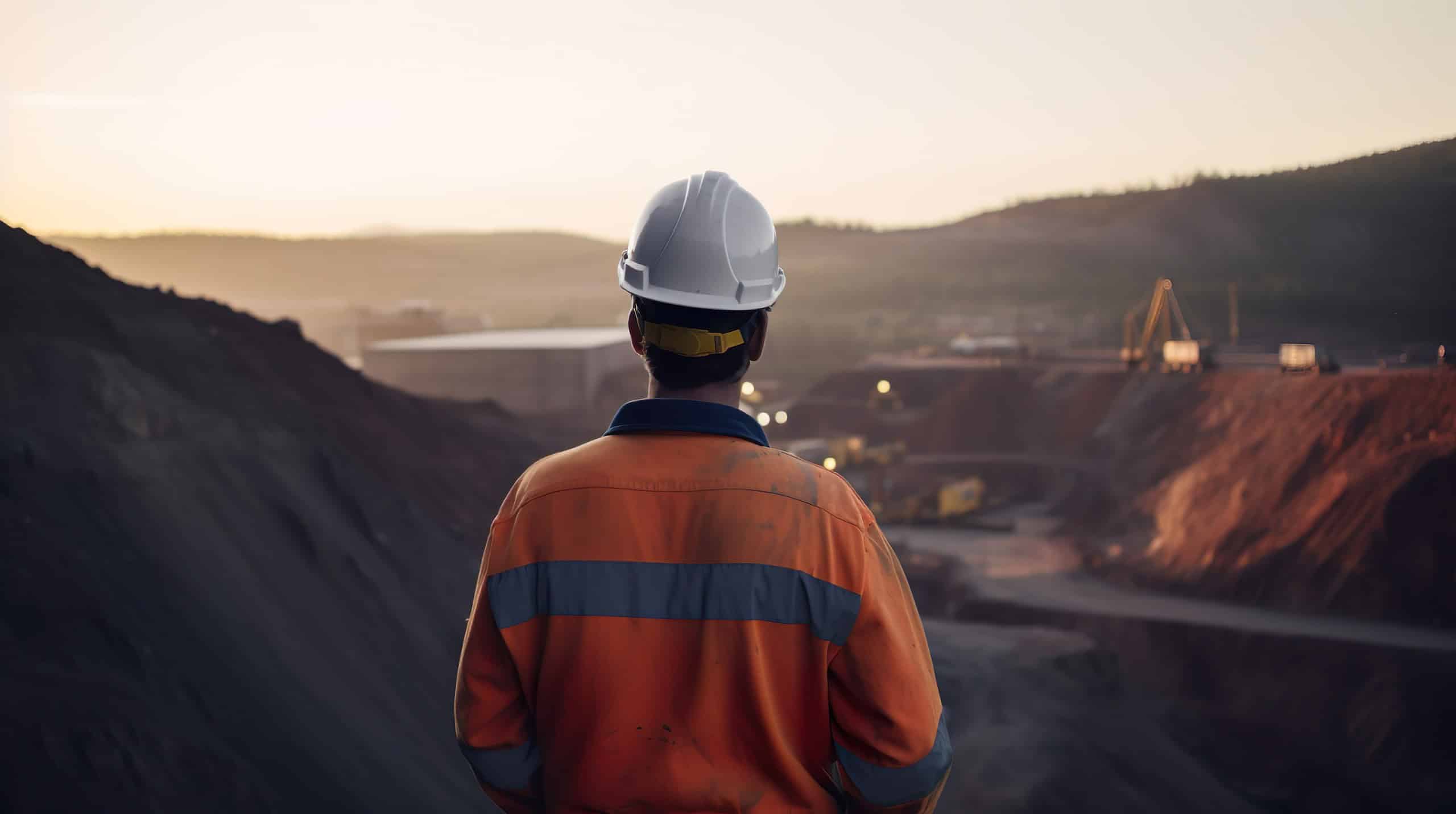A literal land grab for metal-and-mining assets has led to a spike in M&A activity, especially in emerging markets.
Mining M&A continues to abound with Reunion Gold being among the latest companies to ink a deal.
The Toronto-based company’s recent $638-million combination with G Mining Ventures Corp. promises to establish a new, leading intermediate gold producer.
A sale was rumored to have been in the works for months—especially among investment bankers.
Every year, a coterie of metals-and-mining dealmakers convene at the PDAC Conference in Toronto to discuss the latest goings-on in the industry.
During off hours, and over “copious bottles of wine,” these experts typically bring up a range of topics, including potential takeover targets, one attendee tells Global Finance.
This year’s event in March was no different, and Reunion was among the names flagged as being in play. And why not? Reunion, under the helm of CEO Rick Howes, owns a high-grade project in Guyana—a mining-friendly jurisdiction—and is on track to extract gold by 2027.
The company is also flush with cash. Late last year, Reunion sold an 8.6% stake to Luxembourg-based La Mancha Resource Capital for $35 million. It also secured $70 million in additional funds via a separate financing deal.
And Reunion isn’t the only mining company buyers have been circling. In April, Nexus Uranium CEO Jeremy Poirier stated that it was time to “evaluate strategic alternatives” or “an outright sale” for a gold mining project in Nevada. Meanwhile, Defense Metals just tapped a London-based boutique, HCF International Advisers, to review options for a rare earth element project in British Columbia. Then there’s First Quantum Minerals, which is currently shopping around what it considers “nonstrategic assets.”
For many mining players, the timing to ink a deal is right. After all, gold, demand hinges on the fact that the precious metal acts a hedge against sticky inflation.
And in general, commodity companies are consolidating at a fast clip whereas other sectors have been somewhat sleepy. The scarcity of some metals, plus the changing dynamics of geopolitics and the advent of green energy trends, have inspired would-be sellers to get off the sidelines.
Close observers saw this play out last year, when deal value across the global mining market totaled $121 billion. That’s a 75% spike compared with 2022.
There was also a slight uptick of 5% in deal volume between 2022 and 2023. Sixteen deals took place in 2023 with values exceeding $1 billion—a 33% jump compared with 2022.
Mining remains one of the busiest sectors, similar to last year. Per Dealogic, global M&A volume in the space saw 97 deals in the month of January, 69 in February, 77 in March, and, at last check, 30 in April. Deal value for the year currently exceeds $26.74 billion.
For Ramaco Resources Inc. CEO Randall Atkins, an increase in share repurchases and buybacks are likely as well. “Theoretically it’s a good time to be aggressive,” he says, “but not a good time to be brave.”
Why Buy?
High interest rates, regulatory scrutiny and a tense backdrop of market uncertainty made buyers skittish in 2023; across the globe, M&A activity dwindled to its lowest level in a decade.
This year is more vibrant: From January to March, there were 166 deals with valuations exceeding $100 million. That’s an 11% increase compared to the same period in 2023.
With forecasters expecting the US Federal Reserve to carry out at least one rate reduction in June or July, deal-makers are feeling bullish—especially when it comes to mining.
BMO Capital’s Jackie Przybylowski, in an April research note on Denver-based Royal Gold, wrote that while the industry’s growth remains modest, “this could change through the year.”
Expect opportunities for more and larger transactions “fueled by high commodity prices and balance sheet repair,” she said.
Deals will also percolate due to “the global energy transition,” according to BMI, a Fitch Solutions research unit. On the buy side, corporates are explicitly making moves to prepare for technologies and consumer goods that demand critical metals. Electric vehicles, for example, depend on lithium for batteries and cost-efficient energy storage.
This year has already seen a massive $10.6 billion merger between Philadelphia-based Livent and Australian lithium producer Allkem, underscoring the rising demand for “green metals” and portfolios that contain hard rock lithium mines.
EVs also rely on copper and nickel. Therefore, it’s no wonder that Melbourne-based BHP spent $6.4 billion on OZ Minerals a year ago. “This acquisition strengthens BHP’s portfolio in copper and nickel and is in line with our strategy to meet increasing demand for the critical minerals needed for electric vehicles, wind turbines and solar panels,” BHP CEO Mike Henry said at the time.
BHP is also reportedly drafting a new bid for copper producer Anglo American after its $39 billion initial proposal was rejected by the London-listed miner.
BHP isn’t the only corporate writing large checks for “critical minerals.” Before that agreement, London-based Rio Tinto gained greater control over a project in Mongolia via a $3.1 billion takeover of copper developer Turquoise Hill Resources. (Asia-Pacific, excluding China, recorded the highest M&A deal value in 2023—surpassing North America.)
Other big spenders include Saudi Arabia’s Manara Minerals. The company invested billions in Brazil-based Vale’s copper and nickel business to diversify beyond oil.
Another transaction involved Australia’s MMG and the parent company of Botswana’s Khoemacau copper mine, a deal valued at $1.8 billion.
Supply Gaps In Mining
Growing supply gaps are boosting prices and spurring M&A, too. By 2025, BMI predicts a lithium supply deficit. Bank of America projects gold prices to reach $3,000 per ounce. And Goldman Sachs expects a looming copper shortage to escalate costs to more than $6.80 a pound.
“Those are pretty staggering copper numbers,” American Pacific Mining CEO Warwick Smith says. “So, how does that lean toward M&A? I think you’re going to see a lot of the smaller companies come together.”
American Pacific can relate. With Smith at the helm, the Vancouver-based explorer acquired the Madison Copper-Gold Project (2020), Constantine Metal Resources (2022) and Clearview Gold (2023).
The company also co-owns a copper- and zinc-rich site in Alaska with its venture partner, Tokyo-based Dowa Metals & Mining Company.
Near term, expect to see more cross-border alliances develop. Companies are trying to get a leg up on the competition from Russia and China—two nations that continue to lay claim to the globe’s most mineral-rich resources.
“Everything is becoming more internal,” Smith says. “The US, for example, they’re looking at all these critical metals like lithium and saying, ‘We’re getting all our lithium outside of our borders.’”
Now, the impetus is for companies—at the behest of the jurisdictions where they’re based—to wield M&A, partner with a mining-friendly nation, and scoop up assets to mitigate dependence on countries where, perhaps, geopolitical relations are shaky at best.
China, according to Benchmark Mineral Intelligence, controls most of the world’s production of lithium, nickel, graphite, cobalt and manganese. It also owns 100% of spherical graphite.
For Western countries and their domestic companies, Smith says, the thinking is, “We need to have these critical metals ourselves.”
That attitude has also impacted M&A, according to Douglas Pierson, a managing director specializing in metals and mining at investment bank Moelis & Co.
“Reshoring is noteworthy,” Pierson says. “You’re seeing it play out on the steel side.”
Recall last December. Japan’s largest steelmaker, Nippon Steel, agreed to acquire Pittsburgh-based US Steel for $14.1 billion plus $800 million worth of debt. Since then, the transaction has been stymied by a US antitrust examination. The Biden administration seeks to keep the fourth-largest steel company domestically operated.
The regulatory challenge also comes amid a shortfall in steel scrap.
“One factor that’s seemingly driving much of the recent M&A is scarcity and value—especially for good, high-quality assets,” Pierson says. “In many instances, [metals and mining] is the one sector in which you’re beholden to where the commodity resides. That’s not the case in other industries. Here, in fact, ownership and control of these critical resources is key.”




